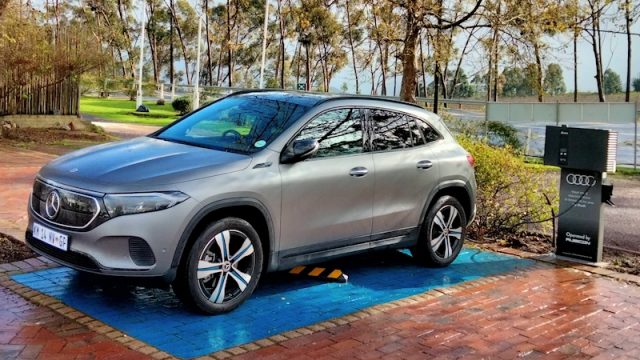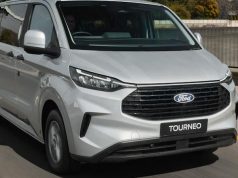A journey from Hermanus to Albertinia proved a tough test for the Mercedes-Benz EQA 250 AMG Line, mainly because the driver failed to plan.
Motorists aren’t the only ones who find the transition to electric vehicles (EVs) hard – in theory or in practice. Carmakers with a history of manufacturing petrol and diesel engines are in a life-or-death struggle to adapt to building EVs.
To turn a profit, or at least not lose money on each EV sold, car manufacturers design vehicles to be compatible with combustion engines or with electric motors and batteries. By doing so, they can share the development cost between the EVs and the fuel burners.
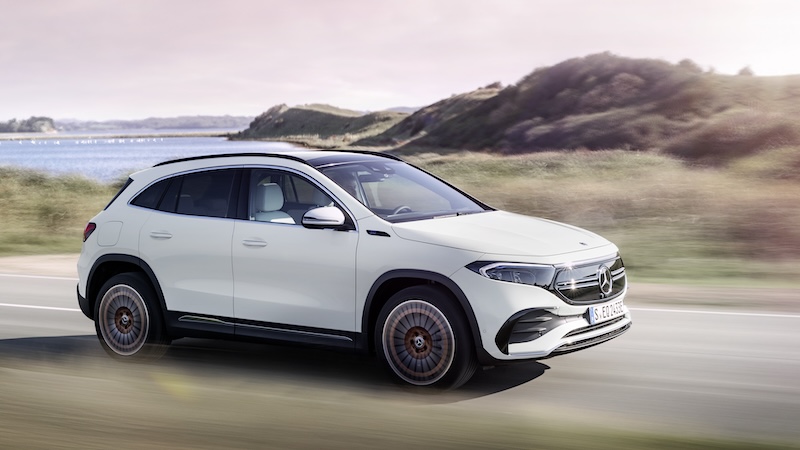
The Mercedes-Benz EQA is one such example. It’s the fully-electric version of the GLA, the German carmaker’s most compact crossover/SUV.
Buyers can choose from a comprehensive range of GLA/EQAs. These include the petrol-powered, entry-level GLA200 Progressive (R922 085) and the diesel-burning GLA200d AMG Line (R985 467). For about R250 000 more, customers can opt for the EQA250 Progressive (R1 176 350) or the EQA250 AMG Line (R1 229 350) – both fully electric.
Specifications – Mercedes-Benz EQA 250 AMG Line
- Price: R1 229 350 (before options, April 2024)
- Claimed range: 402 – 429 km (WLTP)
- Gross battery capacity: 66,5 kWh
- Max. charge rate: 400 V, 100 kW
- Max. power/torque: 140 kW / 385 Nm
- 0-100 km/h: 8,6 sec
- Top speed: 160 km/h
- Luggage capacity: 430 litres
- After-sales support: 5-yr / 100 000 km maintenance plan and 2-year warranty (unlimited km)
- Rivals: Mercedes-Benz EQB, BMW iX1 & iX3, Volvo C40, BYD Atto 3
We tested the EQA250 AMG Line over approximately 800 km, which included 600 km or so on the open road. This long-distance trip forms the basis of this review.
The journey
The planned route ran along the R326 and N2 in the Western Cape, from Hermanus to Albertinia. Before reaching Albertinia, I would leave the N2 near Buffeljagsrivier to drive to the Karoo Art Hotel in Barrydale, a small town off Route 62. Then I would return to the GridCars charge point at Buffeljagsrivier to charge the car, before continuing to Albertinia. Total distance: 298 km.
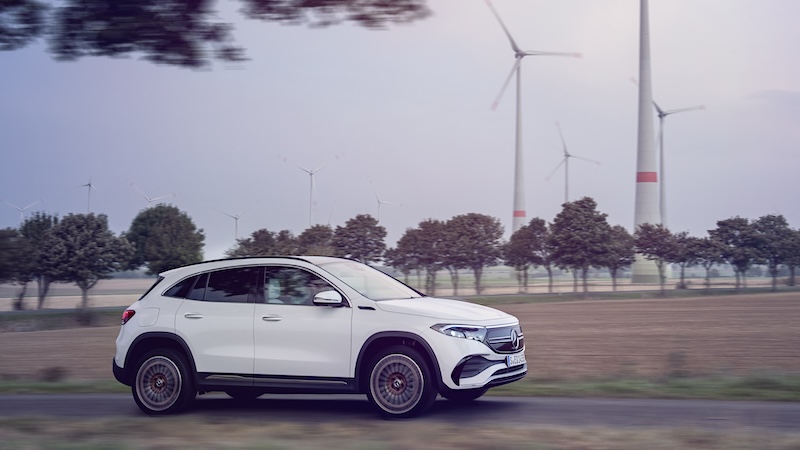
I left Hermanus with the battery on 75 percent and the trip computer quoting a range of 290 km. Upon reaching the N2 highway, I noticed that the trees were leaning to the west while I was driving east. Arriving at Buffeljagsrivier, the EQA’s DTE (distance to empty) was just 90 km!
This means over 200 km of range was eaten away over a mere 148 km, which came as a shock. It wasn’t like I was speeding either. Instead, I mostly had the speedo hovering around the 115 km/h mark, only exceeding the national limit briefly when overtaking. Upon some reflection later on, I did remember accelerating with too much enthusiasm. That headwind had also taken large bites from the battery’s stored energy.
I plugged in at the GridCars charge point at Buffeljagsrivier, but charged for only 15 minutes, to avoid being late for my appointment in Barrydale.
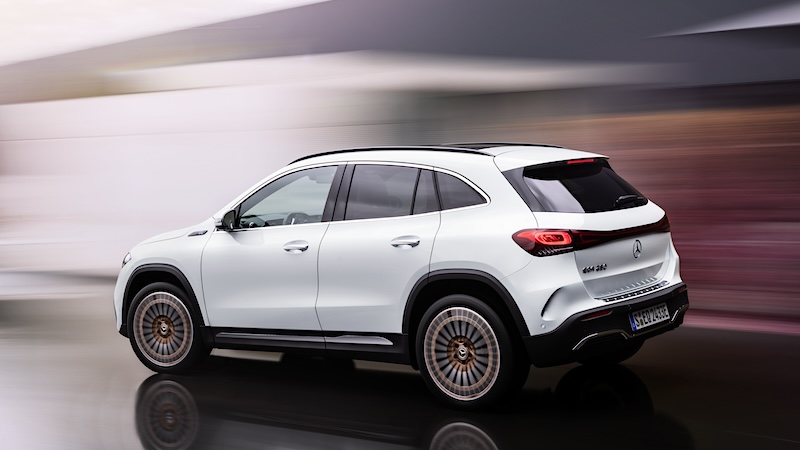
Local challenges
Now, the problem with the Buffeljags point is that the local infrastructure struggles to supply it with enough power. This means it must be limited to about 25 kW, a mere quarter of the 80 kW or so that users expect from a DC charge point nowadays. Luckily, it is one of only a handful of locations where this is a problem.
After 15 minutes of charging, the battery had only gained 5 percent. Still, I felt more confident about driving to Barrydale and back to the charge point in Buffeljagsrivier, a 70 km trip.
After returning from Barrydale, I plugged in at Buffeljags once again. The battery wasn’t far from empty, so I knew I was in for a long charge. This would have been perfectly agreeable at a hotel or home charger, but I was at a takeaway café. Luckily it’s De Oude Post, a long-time favourite.
So, I did what I normally do in these situations: order a meal and contemplate my sins. Just one sin, really: leaving home without a fully charged battery. Yes, for everyday use it’s healthier for batteries to only charge to 80 percent, but for road tripping, a full battery is the way to go.
The distance from the DC charger at Buffeljags to my end destination in Albertinia was only 111 km, but I wanted to play it safe. This meant I had to charge the EQA’s battery, which has a capacity of 66.5 kWh, for about 90 minutes. With the battery charged to about 70 percent of its capacity, I left for Albertinia, where I was to spent the night.
Return journey to Hermanus
With a bit of effort, I could have charged the EQA in my friends’ garage in Albertinia. Unfortunately, we were enjoying some really good whiskies that evening, resulting in a loss of motivation to swop the cars around. The next morning, I had to make peace with another departure without a fully charged battery. Only, this time it was at an even lower charge – just 51 percent.
Again, I was in for a long charge at Buffeljags. To make matters worse, I faced a headwind when returning to Hermanus. Maybe it was the same wind that had pushed me to Albertinia the day before? Anyway, I completed the 260 km voyage to Hermanus without any drama, except for some diet-busting indulgences at De Oude Post, and maybe a bit of self-loathing.
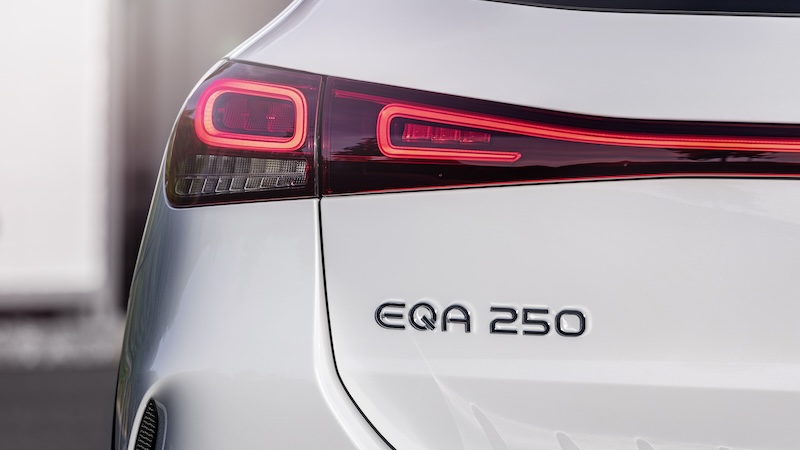
Hard lessons learned
The most important lesson is: leave with a fully charged battery when covering longer distances, something I had failed to do. To rectify this mistake, I should have changed my route slightly to top up at the GridCars fast charger in Caledon. It’s also rated at 60 kW and – unlike the Buffeljags charger – usually delivers 40 to 60 kW. Here, I could have easily charged to at least 90 percent.
Another point to remember is that GridCars and Rubicon, in association with Audi, BMW, Mercedes-Benz, and Jaguar, regularly add more fast chargers. When planning a trip, it’s important to locate newly installed chargers on the ChargePocket map. Not long after my trip, both Heidelberg and Riversdal received 60 kW chargers. This will make my next EV trip to Durban, Port Elizabeth, Knysna, or Albertinia much easier.
Before you set off, remember to pack your AC cable, because most public AC charge points don’t have cables attached. Also take your portable charger along, so you can charge at any domestic wall socket.
And finally, rein in your right foot, because the harder you press on the juice pedal, the faster you run the battery down. Yes, the instant acceleration is fun, but recharging on a road trip isn’t always as convenient as topping up a fuel tank.
So, is an EV worth the schlep?
When undertaking long journeys, an EV requires the driver to do a modicum of forward planning, and to contend with a shorter driving range (unless it’s a BMW iX M50, for example, which has a 550km highway range) and longer refills.
So, is it worth the effort? Well, yes. When leaving home with a full battery, your first charge is much cheaper than driving that 250-550 km on petrol or diesel. Even when buying electricity at a much higher rate than you would at home, it is often still cheaper than using fuel.

Yes, filling up with liquid fuel usually takes just 5-10 minutes, but I find it easy to do something with the 15-45 minutes I’m usually plugged in for. I would go for a walk, enjoy a meal, take pictures, post on social media, or do some writing.
When planning a trip, allow for charging time in your travel schedule. Also, leave on time with a fully charged battery.
Lastly, if you use an EV, you’d enjoy effortless overtaking, a more quiet cabin, and less vibration compared to an internal combustion car.
It’s getting easier
Not following the EV commandments above can get you into a fix. Luckily, charge points are multiplying. GridCars has installed hundreds of public DC and AC charge points, like the one in Hermanus, pictured below.

Rubicon has also installed numerous chargers and these are plugged into the GridCars network. This means EV owners can charge their cars at these points using a GridCars ChargePocket card. (These cards are often branded by EV manufacturers.)
Thanks to this infrastructure roll-out, topping up a car’s battery on long-distance trips is becoming much easier. It’s also worth remembering that most charge points can connect two cars at the same time.
What about the car?
Like most cars, the EQA 250 AMG Line has its pros and cons.
What we liked
With fully electric vehicles, carmakers sometimes include optional features at no cost to the customer, and the EQA we tested gave that impression. The test car had a beautiful matt grey paint finish that didn’t show dirt easily, as some ‘lacklustre’ paints do.
Inside the spacious cabin were subtle rose gold accents that enhanced the premium feel of the cabin. The dashboard looks a little cheap in places, though. It would certainly feel out of place in the EQB and very premium but retired EQC.
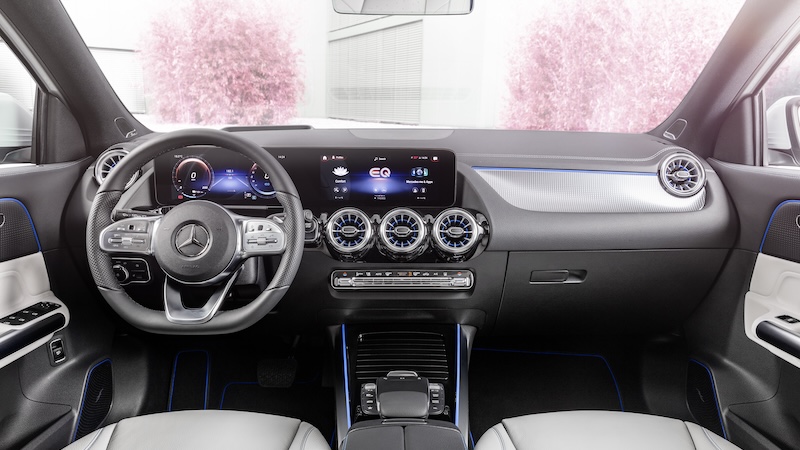
The cabin
The seats are comfortable and upholstered in a luxurious combination of suede and cloth. To adjust them (including the driver’s lumbar support), you have to pull and push the seat-shaped switches in the door panels. The driver’s right armrest is like a down pillow.
The EQA comes with seven airbags, but an additional two can be added as an option. Two digital screens face the driver. The one to her left can be operated in various ways, including with a mouse-like touch pad close to the driver’s left hand. Alternatively, she can control the centre screen by touch.
The tyres had a low-ish profile, but they were quiet and provided a decent level of ride comfort. The car comes with a tyre-repair kit – and no spare wheel – but customers can choose run-flats over the standard tyres. The boot holds 430 litres.
Battery and range
The EQA’s 66,5 kWh battery, with an 8 years / 160 000 km warranty, manages a useful range. Expect to reach around 280 km when driving at a constant 120 km/h, or 350 km for in-town driving. (The picture below shows the test car charging near Grabouw.)
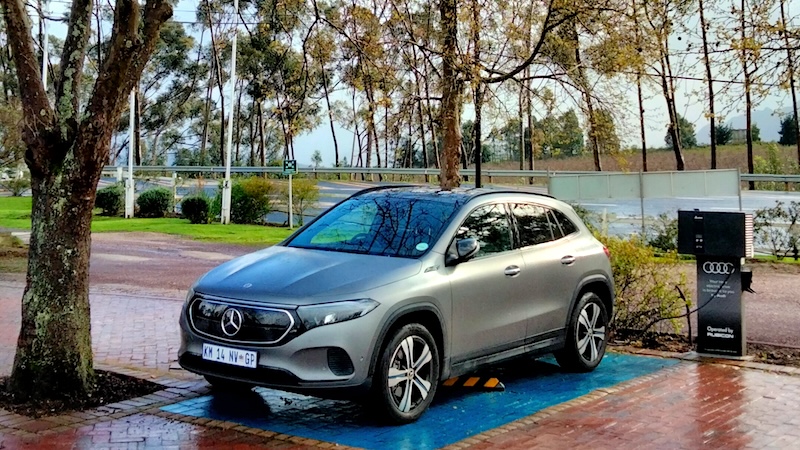
These figures don’t shoot the lights out, but they’re not poor either, and would be more than adequate for my personal transport needs. For those who can wait, the face-lifted EQA should gain some more kilometres per charge. The EQA is rated to tow 750 kg – expect its range to halve if you do.
Mercedes-Benz also equips the EQA with E-Call. “If an accident is detected, a communication module with its own SIM card automatically triggers an emergency call which can shorten the time until the rescue services arrive. Alternatively, an emergency call can be triggered manually to organise assistance,” Mercedes explains.
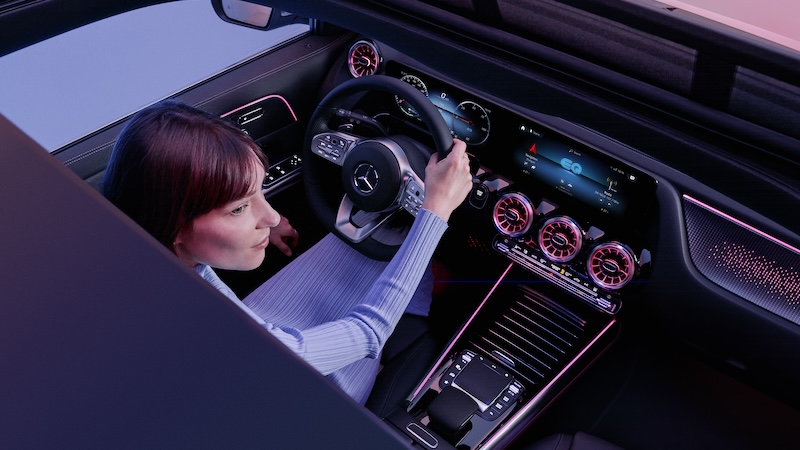
What we unliked
The EQA has a lot going for it, but also misses the mark in some instances.
The buttons on the steering wheel are stamped with a kind of reverse embossed lettering, which is hard to read. It’s ironic that the car has so many safety features, but this slipped through.
A few years ago, the interiors of Mercedes-Benz cars started to emit creaking noises around the dashboard and middle console. It can happen spontaneously, when the body or chassis flexes a little, or when pressed with your fingers.
Lastly, the air-conditioner’s fan seemed to have a very slow setting and some very fast settings, but nothing in-between. Also, there were no rear vents. Even the much humbler Suzuki Fronx has aircon vents for the rear passengers.
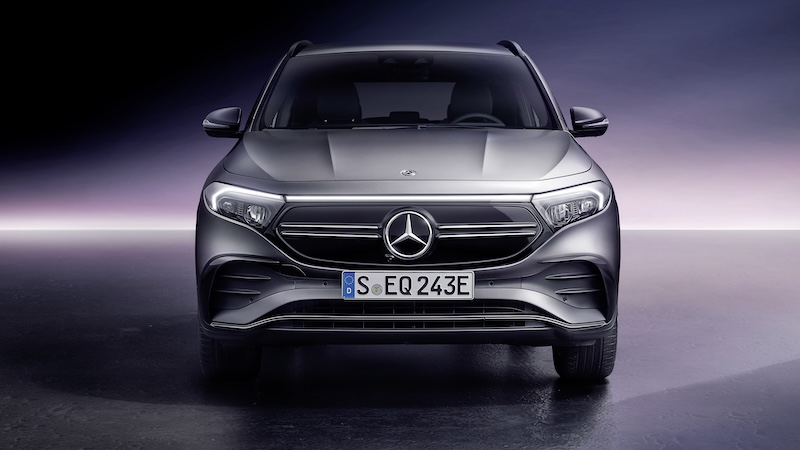
Conclusion
The EQA is a likeable, attractive car with a practical range per charge. It’s spacious for its compact size too. However, it will serve customers well to consider the Mercedes EQB, which is superior in every respect. Pricing for the EQB starts at R1 381 250 and for that you’d get a bigger, more powerful car with all-wheel drive and the option of seven seats.
Also consider the BMW iX1 xDrive30 M Sport (R1 245 000) and the Volvo XC40 Recharge Twin Motor Ultimate (R1 324 000). These too boast more power and all-wheel drive.
The Mercedes-Benz EQA 250 AMG Line scores 3 out of 5.
3.0 out of 5.0 stars

